
Raising meat chickens seems like a daunting task, but really, it’s quite easy. If you’ve ever wanted to learn how to raise chickens for meat, this is the time to do it. Because, what better time than now!
If you’re here, it means that you’re probably realizing just how broken our food system is. And why it’s important to take control of your own meat source. You can do this by raising meat chickens on your own property. No really, you can do it! Let’s walk through these easy steps to get you started.
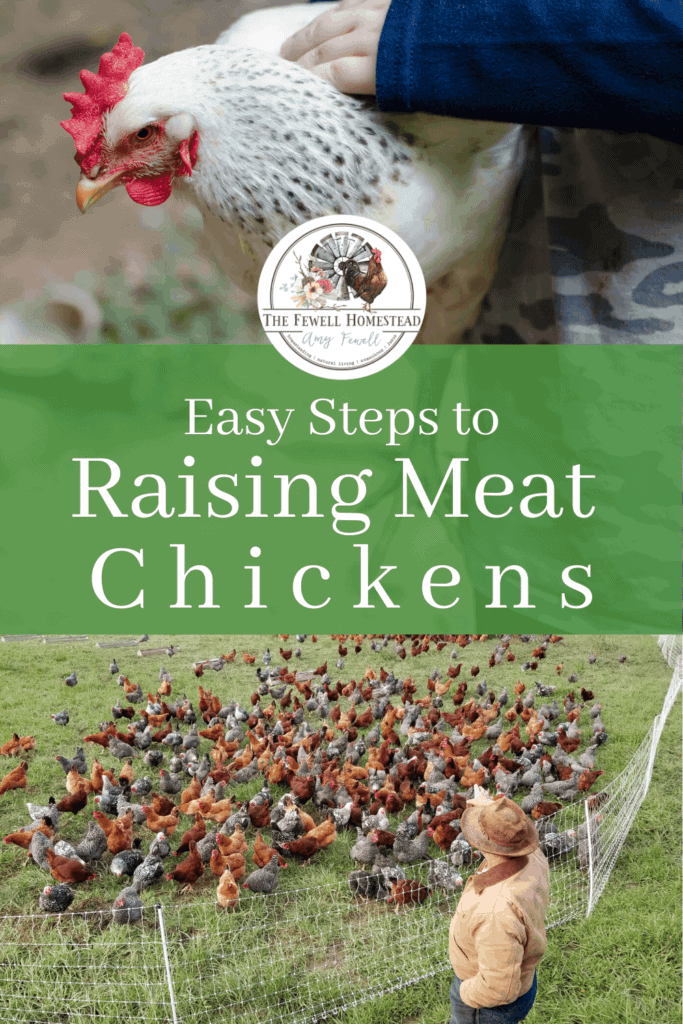
The Basics of Raising Meat Chickens
While meat chickens are pretty easy to raise, there are some things to consider before diving in head first. Make sure you understand the process, and you’ll be good to go.
Here are a few things to consider before you get started.
- Most meat chickens grow to full maturity between 8 and 12 weeks of age. If you choose to go with a slower growing heritage breed of meat chicken, they can take up to 6 months to reach a large enough bird for the table.
- Commercial breed super hybrid meat chickens (like the CornishX) do not reproduce offspring or eggs on their own. And they also don’t survive well after the 10 or 12 week mark of age.
- There are a few main breeds for meat chickens––CornishX (like what you buy at the store), Freedom Rangers or Red Broilers (which have darker meat than store chicken), and Heritage Hybrids (like the Delaware Enhanced). All are great options, but the heritage hybrids and Freedom/Red broilers do take about 12 weeks versus the 8 week CornishX.
- Meat chickens eat a lot of feed. That is, unless you are raising them on pasture. Pasture can be as simple as a 1/2 acre yard! Even still, they eat more feed than egg laying chickens.
- You’ll need to purchase butchering supplies. And some of them aren’t cheap. Or, you can do things the old fashioned way. It just goes slower. We’ll go over both methods.
- Some meat breeds are super ugly. Yeah, like, super ugly (like the CornishX). They don’t have a bunch of feathers. They lounge around worse than a teenager during the summertime. Other breeds are more active (like the Red Broilers and Delawares) therefore making them better foragers.
- Meat birds have higher mortality rates. Especially if you get the big commercial breeds, like the CornishX. Be prepared to lose some chicks, and even some mature chickens. They can be fragile due to their genetic make up. So keep this in mind when trying to figure out how many to order. However, people have raised plenty of batches without losing any chicks at all. Just know that this is a possibility.
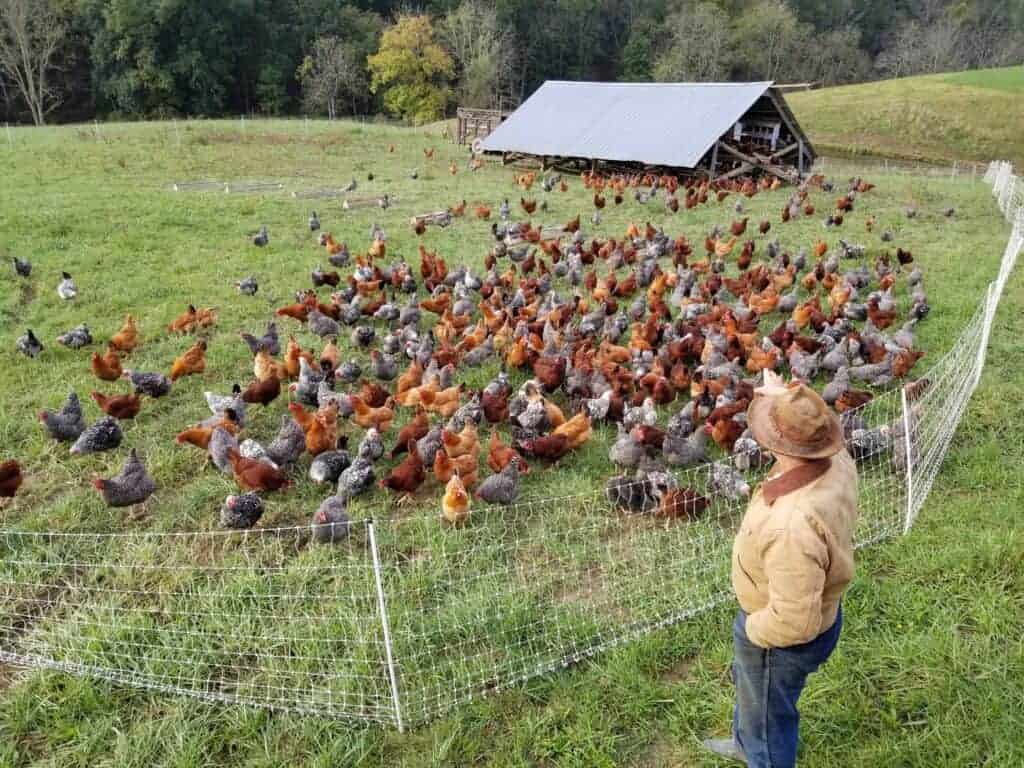
Meat Chicken Housing and Feed
Raising meat chickens doesn’t require much more of an effort than raising regular chickens. They’ll need ample housing that is large enough for your chickens to move about. You can house them in a coop with a chicken run. Or you can house them in a pasture raising system on grass. The method of housing and feeding meat chickens is really up to how you’re choosing to raise them. Let’s go over them.
Raising Meat Chickens on Pasture
Most people will choose to raise their meat chickens on pasture. You can raise them anywhere, but pasture will produce a more natural bird for the table. And if you’re putting in all this effort, why not go with all natural! Natural chickens have more nutrients than birds raised completely on feed.
You can create a pasture ranging set up like the one used on Polyface Farms (above), or like the chicken tractors that we have, created by John Suscovich. Either set up will work well for you.
Move your chicken tractor each day to new pasture. Incorporate electric netting, like the one seen above, to give your chickens a bigger space to range. This also allows for you to only move them every few days, rather than every day.
Offer one feeding of chicken feed each day to your birds if they are foraging. We often like to do this in the late afternoon so that they forage first and then eat feed secondarily. Many meat birds can be lazy, so doing this can help teach them to eat pasture before feed. This will also cut down on your feed bill.
Your chicken’s feed consumption will depend on how many birds you have. But generally it’s 1/4 lb+ of feed per bird per day.
Raising Meat Chickens on Feed Only
If you are choosing to raise your meat chickens in more of a small or confined area, you can raise them off of grower feed and kitchen scraps alone. They will eat more feed, therefore you’ll go through feed a lot more. Make sure you save those kitchen scraps, as they contribute to the feed consumption! Free food is great for chickens!
Many people also choose to constantly feed meat chickens so that they grow quicker. Some do the 12 hours of free choice feed (a feeder constantly filled for 12 hours), then 12 hours off of feed. This gives their digestive tract a break, but allows them to eat as much feed as they want to during the first 12 hours period of time.
The biggest issue you’ll have with raising meat chickens in confinement is that, well, they poop. A lot. A lot of poop, ya’ll. So keep this in mind when choosing how to raise your meat birds. They will need to be moved, or their area cleaned, often.
Your meat chickens should be fed a grower feed of at least 19% while you are raising them.
Clean, Fresh Water is Important
Believe it or not, clean, fresh water for your meat chickens is very important. Meat chickens can get dehydrated quickly, so they’ll go through a lot of water. Since they consume more food than a regular chicken, they also require more water.
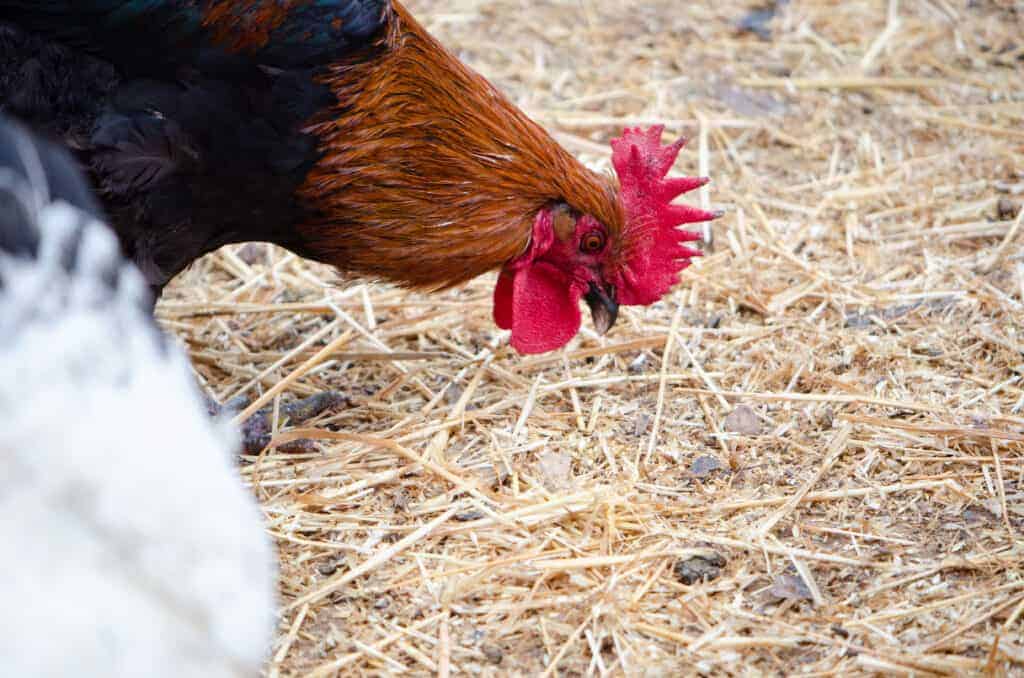
Can My Meat Birds Live with My Regular Flock?
Believe it or not, if you have a big enough set up, your meat birds can live with your regular flock. However, they will probably grow slower. We have successfully grown random meat birds in with our regular flock. They just eat regular feed and free-range. This gave us birds for the table in about 10 to 14 weeks or so (depending on the breed).
While I wouldn’t recommend it, it absolutely is attainable if you’re looking to only raise a few meat birds at one time. It helps to not have to set up a completely different area for your birds. And it’s easier during chore time!
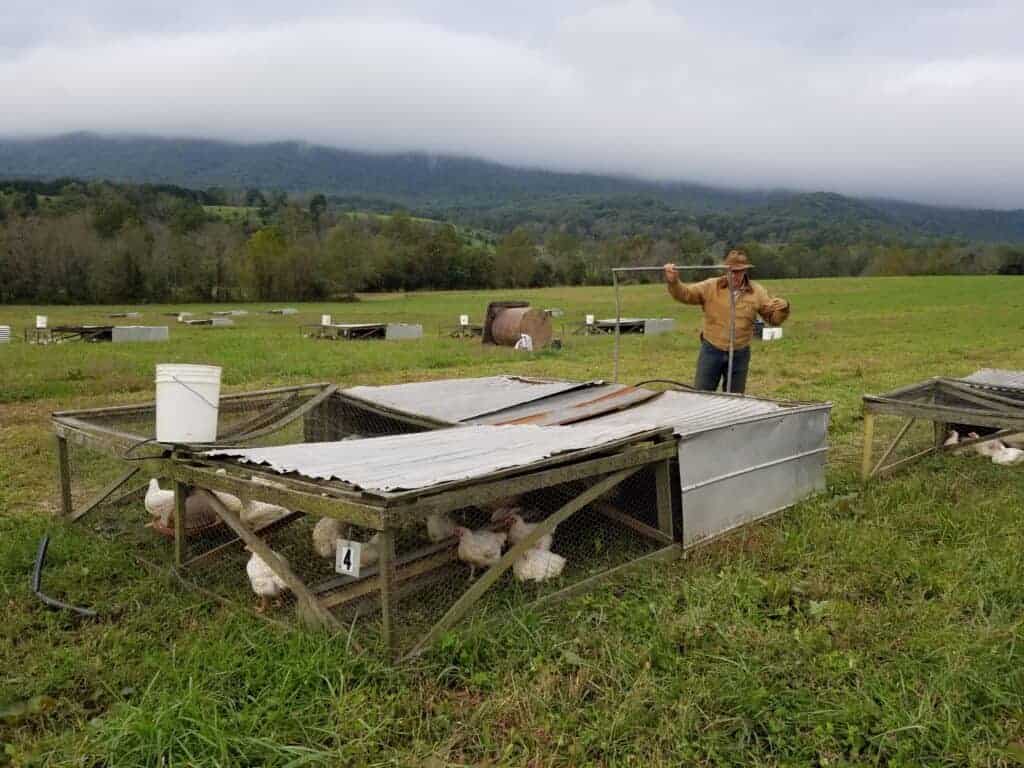
Supplies for Dispatching Your Meat Chickens
So you’ve raised your meat birds to full maturity, and now it’s time to butcher them. What on earth will you need, and how do you do it? While I’d love to be able to tell you step-by-step, that’s hard to do in a blog post. Believe it or not, I don’t have my own video (yet) on chicken butchery. But the wonderful world of YouTube is full of plenty of videos to watch on chicken butchery. I’d also encourage you to check out the Homesteaders of America membership program, which has a full, in-depth video by Joel Salatin about raising and butchering meat chickens.
Before you go skipping off into Youtube world though, let’s go through some of the things you’ll need for processing your birds.
- chicken plucker
- chicken scalder (or a large stock pot that a chicken can fit into)
- chicken kill cones
- heavy duty kitchen shears
- good quality knife
- poultry shrink bags for the freezer
- a good processing table (with a sink and trash bin!) or like this one
You’ll also consider having rubber/latex gloves if you don’t want to get blood on your hands. Some people can have a skin sensitive reaction when their hands are processing chickens for more than 30-minutes. I’m one of those people! So I choose to wear gloves.
If you prefer to butcher chickens the old fashioned way…
Then you really only need a stock pot full of hot water, a very sharp axe, and your hands for plucking!
Don’t forget to keep the feet!
And all the other goodies too. The livers, hearts, gizzard. The best part of raising your own chickens for meat is that you get to keep all of the things you wouldn’t normally get with a chicken at the store. You can use these things to make extremely nutritional homemade chicken bone broth. Or, better yet, you can learn how to cook them for eating. You can also use these traditional discards as dog food!
Make sure you don’t feed your chickens for at least 12 hours before butchering them. It will make for a much cleaner processing of the bird.

That’s basically it! Make sure you feed them each day, give them fresh water each day, and move them frequently . . . and you’re good to go! Just about anyone can raise their own meat chickens. And what a liberating feeling it is to own your food system!
Other posts you may enjoy:
- Homemade Chicken Pot Pie with Rustic Crust
- How to Make and Pressure Can Chicken Bone Broth
- Raising Broiler Chickens: Breed, Feed, and Housing
- Rabbit Care Basics for the Beginner
- The Basics: Raising, Breeding, and Processing Meat Rabbits
- 10 Easy Steps to Start Raising Chickens
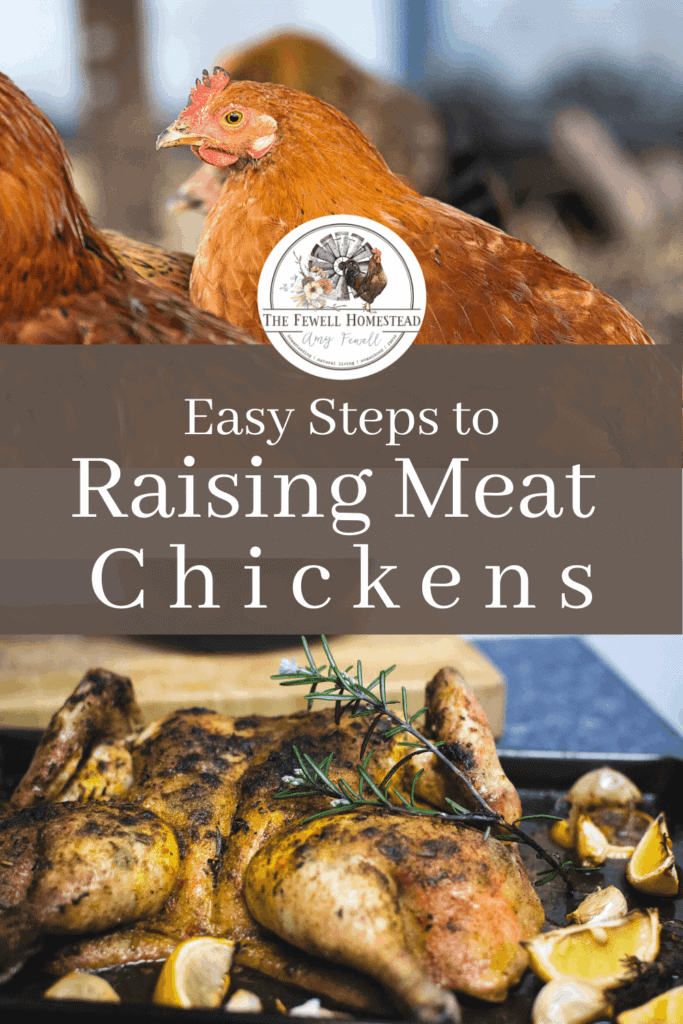










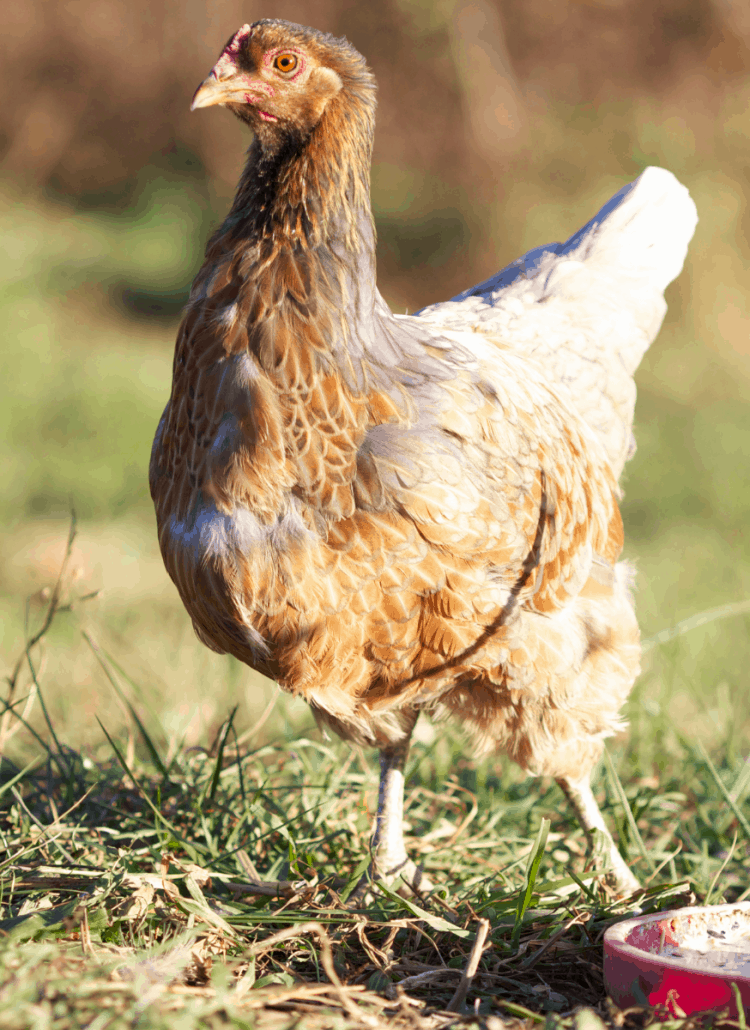
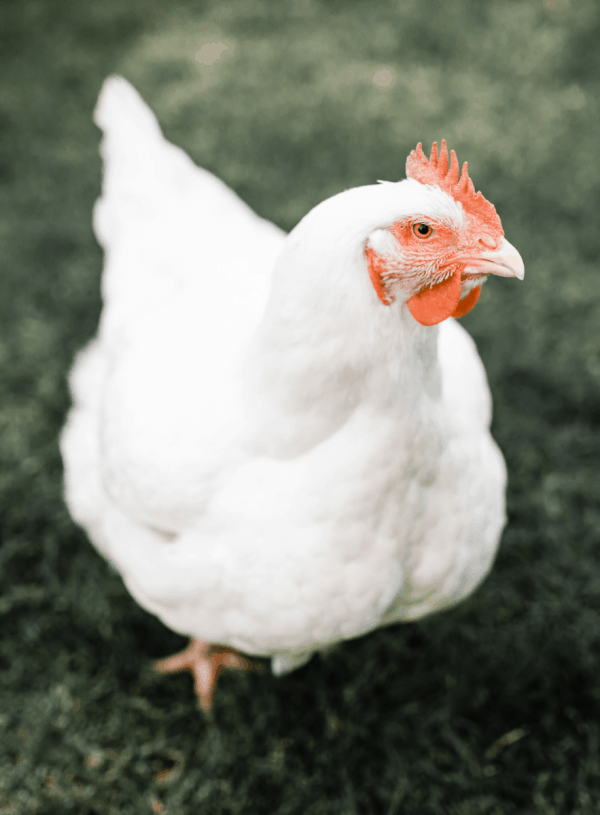
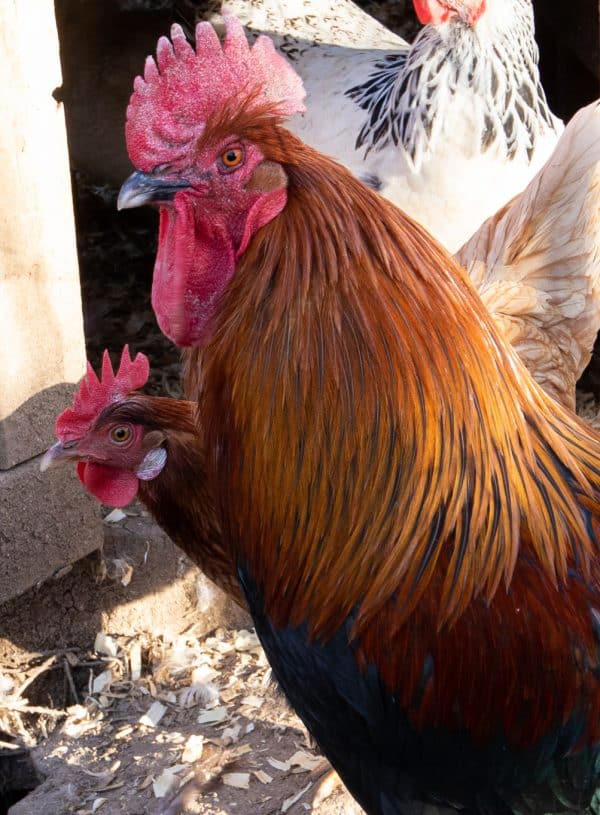

My husband and I are considering raising meat chickens for our freezer and I’ve started the process by doing my ‘homework’ — Thanks for a good article.